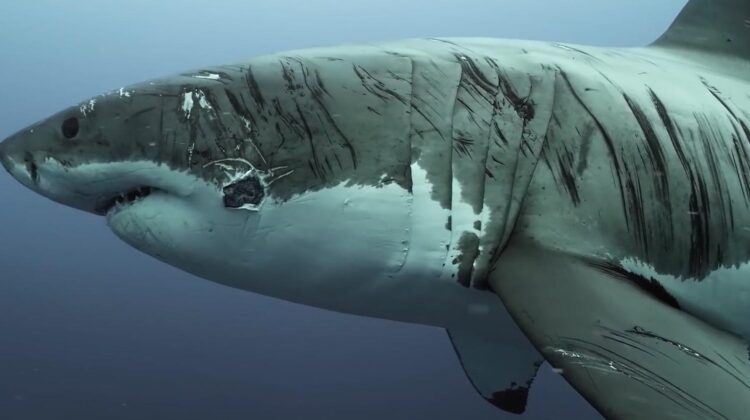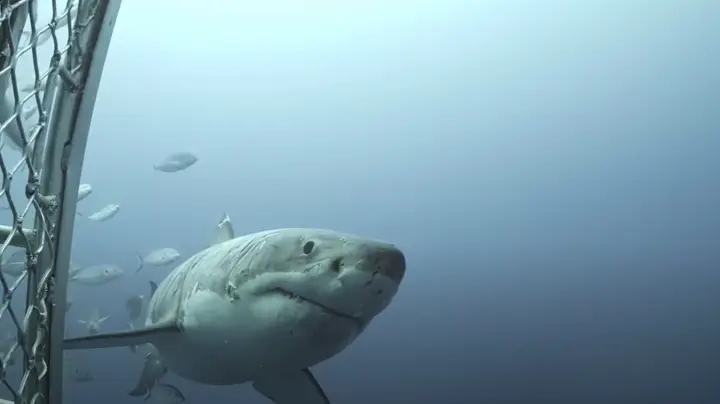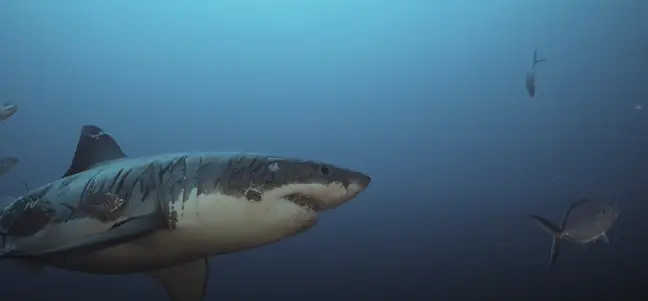
A recently captured footage of a great white shark off the coast of South Australia has left many in awe of the massive predator. The shark, believed to be a male, bears scars and wounds all over its body, leading experts to speculate on the possible causes of its battered appearance.
The footage was taken near the Neptune Islands, a popular spot for shark diving due to the high population of great white sharks in the area. The underwater cinematographer who captured the footage, Dean Spraakman, was amazed at the sight of the shark and called it the ‘world’s most battered’ shark.

While it is difficult to determine the exact cause of the shark’s injuries, some experts suggest that they may have been caused by interactions with other sharks during mating or dominance behaviors. Others speculate that it may have been caused by interactions with prey such as seals.

Despite its battered appearance, the shark appeared calm and friendly towards the divers who captured the footage. Spraakman remarked that the shark came very close to him, even within arm’s reach, and was curious about the divers.
The footage has generated a lot of interest among shark enthusiasts and marine biologists. It is a rare opportunity to observe a great white shark in such a condition, and it has opened up new avenues for research into the behavior and ecology of these apex predators.

Great white sharks are one of the most feared predators in the ocean, and they play an important role in maintaining the balance of the marine ecosystem. Despite their fearsome reputation, they are vulnerable to overfishing and habitat destruction, and their populations have been declining in many parts of the world.

The footage of the ‘world’s most battered’ great white shark is a reminder of the importance of protecting these magnificent creatures and their habitat. By conserving their populations, we can ensure that they continue to play their vital role in the ocean ecosystem for generations to come.
